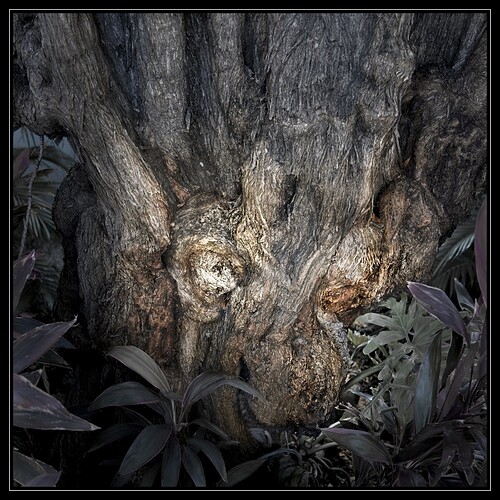You captured a tree in between colorful plants – and your brain played tricks on you
( often, we tend to ‘recognize’ patterns, faces and such ).
Then you enhanced the monster’s face (a bit), kept it in the colourful surroundings
… and stayed close to the ‘journalistic’ approach, which is a pity.
I think, you could have ‘freed’ your mind and gone more experimental
– see what @herman did …
something different ( no masterpiece, but it might inspire you )
VC1 → 780_0646 2023-04-29.nef.dop (1,8 MB)
a few notes
- cropped to square
- changed perspective → to bring out the ‘hair’
- muted the colours (partly B&W …) → to not distract from the subject
- changed the lighting
- adjusted contrast and such
- re-coloured (!) the face and the surroundings
→ dark & cold tends to fade back, while warm seems to come forward …
.
While those LAs appear in some order, I didn’t follow a ‘linear’ approach
( jumped forward and backwards in between them ).
